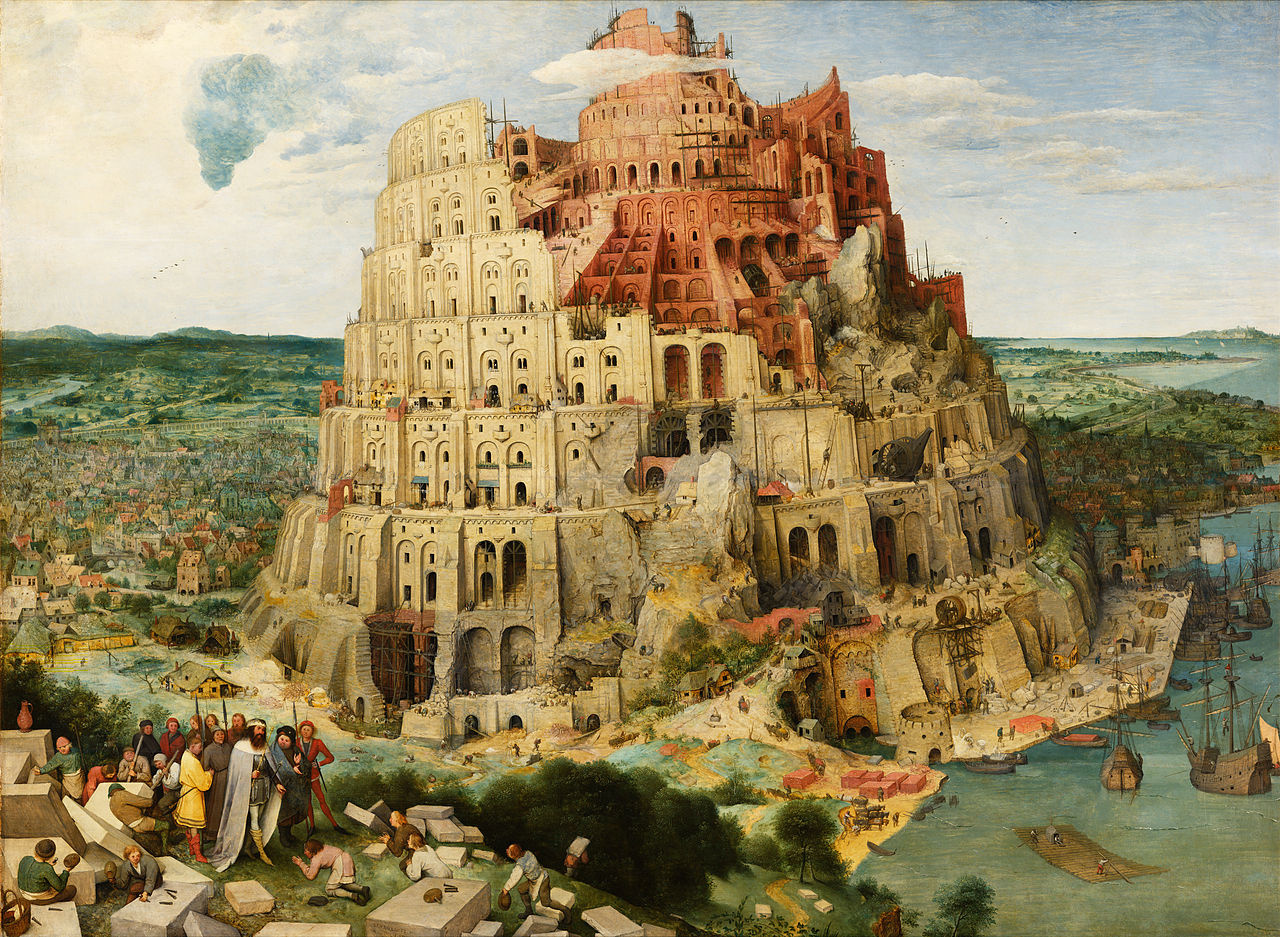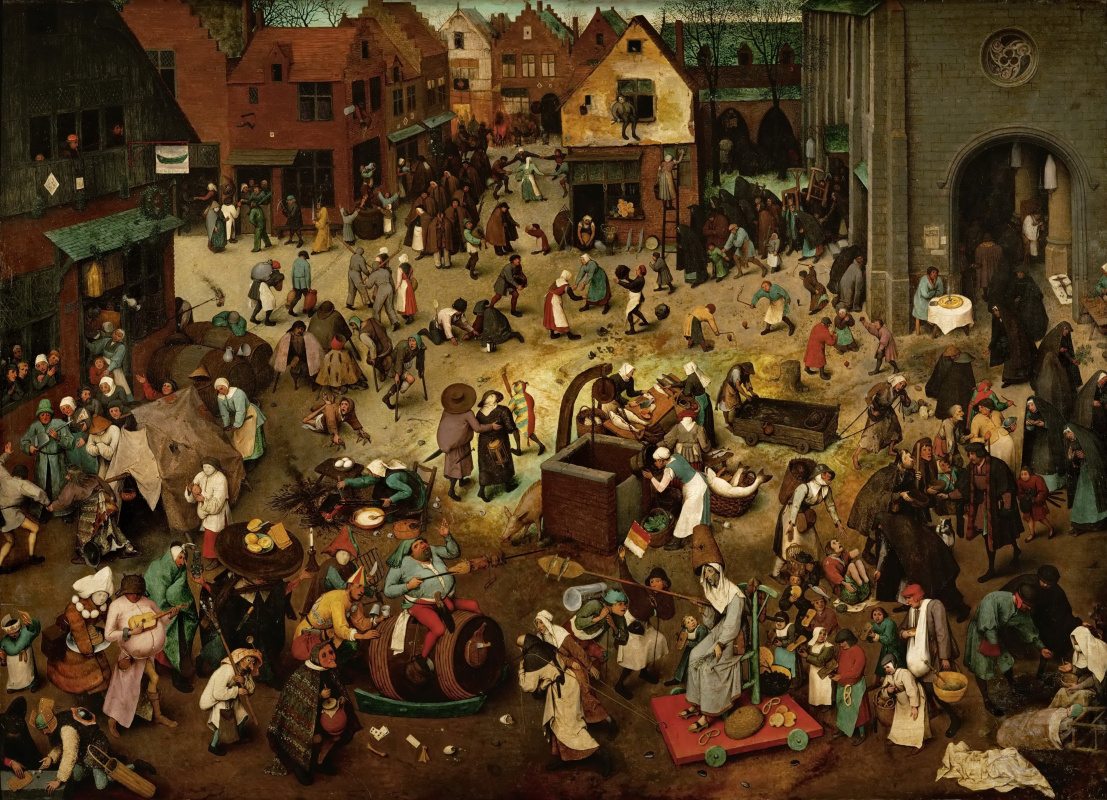To mark the 450th anniversary of the death of Pieter Bruegel the Elder (ca. 1525/30−1569) the Kunsthistorisches Museum Vienna is dedicating the world’s first overview of Bruegel’s entire oeuvre from 2 October 2018 to 13 January 2019.

Developed from the art collections of the House of Habsburg, the Picture Gallery of the Kunsthistorisches Museum Vienna today is one of the largest and most important of its kind in the world.
It owns the world’s greatest holding of panel paintings by Pieter Bruegel the Elder, the greatest Netherlandish artist of the 16th century. From just over forty paintings by Bruegel’s own hand preserved to this day, the Kunsthistorisches Museum Vienna owns his fourteen panels, including the most famous works, as Tower of Babel (1563), Hunters in the Snow (January) (1565), and Peasant Wedding (ca. 1568).
It owns the world’s greatest holding of panel paintings by Pieter Bruegel the Elder, the greatest Netherlandish artist of the 16th century. From just over forty paintings by Bruegel’s own hand preserved to this day, the Kunsthistorisches Museum Vienna owns his fourteen panels, including the most famous works, as Tower of Babel (1563), Hunters in the Snow (January) (1565), and Peasant Wedding (ca. 1568).
One of the most beloved of Netherlandish artists, Pieter Bruegel the Elder is best known today for his paintings of peasants and proverbs but less commonly recognized as the inventive and influential draftsman and colorist who brought a new naturalism to landscape painting and who pointedly dissected the imperfections of human nature, even though it was through this exceptional novelty that Bruegel’s art gained widespread fame during the sixteenth century.
Bruegel is famous for his stunning compositions, which are often moralising and always teeming with characters, inviting the viewers to reflect on the complexity of the image contents.
Bruegel is famous for his stunning compositions, which are often moralising and always teeming with characters, inviting the viewers to reflect on the complexity of the image contents.
As part of the international research project prior to the upcoming sensational exhibition, all Bruegel paintings from the collection of the Kunsthistorisches Museum Vienna are currently undergoing a thorough technological examination and scientific analysis at the restoration workshop.
Specialists have already conserved The Suicide of Saul (1562) and The Peasant and the Nest Robber (1568) thanks to the generous monetary support of many donors. Now researchers are revising the rest of the panels. An essential focus of the campaign is set on the detailed status check of the fragile works. For instance, the surfaces of the Peasant Wedding (ca. 1568), the Peasant Dance (1568), and the Procession to Calvary (1564) are to be cleaned of a strong pollution.
Specialists have already conserved The Suicide of Saul (1562) and The Peasant and the Nest Robber (1568) thanks to the generous monetary support of many donors. Now researchers are revising the rest of the panels. An essential focus of the campaign is set on the detailed status check of the fragile works. For instance, the surfaces of the Peasant Wedding (ca. 1568), the Peasant Dance (1568), and the Procession to Calvary (1564) are to be cleaned of a strong pollution.
For the best possible protection and preservation of the unique works, all paintings should be provided with safety glass and put into climate-controlled showcases integrated in the decorative frames.
Before that, however, each painting is currently being photographed at the Kunsthistorischen Museum Vienna with the help of a specially developed positioning system.
Before that, however, each painting is currently being photographed at the Kunsthistorischen Museum Vienna with the help of a specially developed positioning system.

Recording High Resolution Photography, the Peasant Dance (c. 1568). Photograph: Kunsthistorischen Museum website
These high-resolution digitized images are uploaded together with the latest research results to the museum’s website, making the fascinating panels of Pieter Bruegel the Elder accessible to all who are interested in their scrutinizing to the smallest detail.
But that’s not all. For the upcoming exhibition of Pieter Bruegel the Elder, the Kunsthistorisches Museum Vienna plans to make a tactile version of the celebrated Fight between Carnival and Lent (1559) to invite visitors — especially blind and partially sighted ones — to "comprehend" the painting.
The Fight between Carnival and Lent
1559, 118×164 cm
By reproducing the panel’s major groups of figures in a relief, the specialists will provide the tactile versions of the Bruegel’s characters for people who are blind and visually impaired. In addition, the curators plan to use a 3-D printer to create models of some of the every-day objects scattered throughout the painting, and by doing so, provide a barrier-free access to the masterpiece by Pieter Bruegel the Elder.

Design for the tactile installation and the 3-D models, Tactile Studio, 2017. Photo from the Kunsthistorisches Museum Vienna website
The collection of Pieter Bruegel the Elder at the Kunsthistorisches Museum Vienna will be complemented by many of his paintings and drawings on loan from international museums and private collections for the upcoming monograph exhibition. There is no clear information about their titles yet. However, it goes from a video teaser at the museum’s website that Bruegel’s Tower of Babel from Rotterdam will come for the sensational comparison for sure.
The Tower of Babel (little)
1565, 59.9×74.6 cm
The anticipated monographic exhibition in Vienna is a landmark event, for so far, the vast majority of the Bruegel’s fragile wooden panels have never been loaned for exhibition purposes. The overview of Bruegel’s entire oeuvre in 2018 will be a real sensation!
The world’s first largest monographic exhibition of Pieter Bruegel the Elder will be on display from 2 October 2018 to 13 January 2019 at the Kunsthistorisches Museum Vienna.
Written on materials of the Kunsthistorisches Museum Vienna website, events.wien.info, visual-arts-cork.com. Title illustration: Pieter Bruegel the Elder, The Tower of Babel, 1563, oil on panel. The Kunsthistorisches Museum Vienna.















